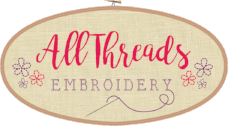
More Information
Improv Embroidery takes a fresh look at threads, fabric and stitching as a personal journey.
It encourages the beginner or experienced embroiderer to boldly go into new ideass, colour experiments, stitching with attitude to make highly individual contemporary works. The book contains practical information and useful tips with pointers for different approaches to design and narrative.
Of this book, Sharon Peoples wrote the following review:
"Everyone has a story.
Capturing that story in any form opens us up to reflection. Reflecting can take us to surprising places and perhaps opens up a path to creativity, if we allow it.
Creativity is about capturing those moments that make life worth living. When we are involved in creativity, we feel that we are living more fully. As a creative person, I am sure Carol can attest to so much joy involved in the creative endeavour. On the other hand, putting our story out there is a risky business. Fortunately Carol’s book lays out for us a guided journey to facilitate stitching our story creatively.
In Carol’s book Improv Embroidery she has a chapter titled: Telling your Story with Embroidery
Traditional embroidery usually tells us a story ….
Stitching your own stories is just a step towards a more creative life. Arousing and cultivating curiosity and interest through needle and thread encourages us to take delight in the strange and the unknown. There is no end to the unknown and, also, delight can be endless.
My favourite Hungarian American psychologist, specialising in creativity, Mee-high Chick sent mee high (Mihaly Csikszentmiahalyi), calls for us to become aware every day of how we are surprised by something, try to surprise at least one person every day, and to write down (or perhaps in this case, stitch) each day what surprised us and how we surprised others. Surprise helps us keep the sense of wonder alive and active. It is the surprise in artwork that holds our attention whereas conformity can flatten our interest. By surprise I don’t mean novelty, but more a sense of being overcome or overpowered by our emotions.
Just as the sound of a tree crashing in the forest is unheard if nobody is there to hear it, so creative ideas vanish unless there is a record and a receptive audience to receive or implement them - creative people need validity from others. The stitches we put onto to cloth can record our ideas, our emotions, what we are thinking, even our existence.
What Carol has done for us is to find a new way of recording original ideas, getting readers to relax and break traditional boundaries. The meaning of the word surprise in late Middle English was ‘unexpected seizure of a place, or attack on troops’ – seizing the borderlines, the restrictions, to stitch at the frontline.
She call for stitchers to record when something strikes an interest – follow it! Research it, draw it – stitch it! Often an impression is brief, we can be too busy to explore the idea, the imagined image, or the emotion. Not only does she urge us to keep a sketchbook, but she answers the why with the how of maintaining sketchbooks. The world is our business, and we can’t know which part is best suited to our abilities, our selves, our potentialities, unless we make a serious effort to learn about as many aspects of it as possible. Keeping a sketchbook or journal helps us to do this. And taking ideas further in stitch develops our sense of who we are.
If it is a story about war and conquest, as it was expressed in the Bayeux Tapestry, as it has been through the sunflowers representing the Ukraine. We can use stitch as message – a banner for our disgust, it can become a flag of our own personal rebellion, as a record of our own loss, a badge of our politics. Recording our histories in stitch is not new, but doing it in our own way, in our own colours, in our own stitches is formidable.
Carol calls to be open to what the world is telling us.
Experiential learning – the process of learning through doing, for me is one of the most powerful ways of developing our creativity. In this book she gives readers steps toward a more creative life through the cultivation of curiosity and interest and to learn about stitching by doing.
Pick up some cloth, a jacket, a scarf and old sheet, thread that needle, tie a knot but first get reading and then get stitching! "
